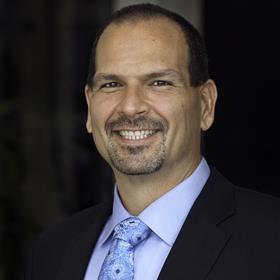As a founder of SoftLayer (now IBM Cloud) I had the opportunity to be at the forefront of the cloud era since before anyone really knew what the ‘cloud’ was, writes StackPath CEO & Chairman Lance Crosby.
And I can tell you that development of the ‘edge’ — though, technically, a part of the cloud — is leading to as dramatic a revolution.

And a revolution is called for, if only to meet the changes happening in the media industry. VOD, OTT, and music/audio streaming are quickly making traditional media obsolete.
By 2020, more people will watch online video than TV, and 1 million minutes of online video will be consumed every second. Delivery speed, capacity, and quality is key, and media and entertainment companies have increasingly stringent requirements. If they can’t get content to the end users, or ‘eyeballs’ quickly and easily, somebody else will.
The traditional cloud model where workloads reside mainly in mega data centres that sit way out past the exurbs just isn’t good enough.
The edge has a unique and strategic location in the overall topology of the cloud. Edge-optimised workloads share computing, storage and delivery responsibilities between origin data centres and computing, storage, and delivery resources in PoPs closer to the eyeballs.
That provides an opportunity for companies to decentralise processing, better aggregate and consolidate data, reduce latency, and increase security. These enable real-world, measurable business value such as faster data analysis, lower network traffic costs, optimised cloud and on-premise costs, better quality of service, and improved regulatory compliance. In the era of GDPR, this is now more important than ever.
So far the industry has barely tried tapping the full potential of the edge. What customers need now is a true platform that is on the edge and close to the users. A platform that is secure, provides composable infrastructure services, and can quickly and easily accommodate an increased demand, so they can leverage edge services and even create and deliver edge services of their own.
Who will own the edge?
I don’t think it will be the public cloud services providers. They may own the cloud as it exists today, but they are not agnostic. With their closed ecosystems customers wouldn’t be able to securely and seamlessly integrate services from multiple providers at the edge as will be necessary.
It won’t be the legacy CDN service providers either, unless they find a way to stop time and invest massive CAPEX to rebuild their existing infrastructures. They are great at providing content delivery on their own infrastructures, but cannot give third parties the ability to build on their infrastructure. This will be necessary to tap the full potential of the edge.
It also won’t be the legacy security service providers. They deploy their services on others’ clouds and edge infrastructures, but don’t have the expertise, scale or scope to build their own platforms.
This is why I founded StackPath, a platform of secure edge services that enables developers to protect, accelerate, and innovate cloud properties ranging from websites to media delivery and IoT services.
A platform that is origin agnostic, able to hyperscale, inherently secure, and allows users to easily connect to a fully secure SaaS world. Integrated and automated through a single API and customer portal, allowing anyone to build and deploy their own solutions at the edge.
That’s what we’re doing. Because that’s what it will take.
Lance Crosby is CEO & Chairman at StackPath
IBC2018 StackPath are exhibiting at IBC2018 on Stand 14.D40.



























No comments yet